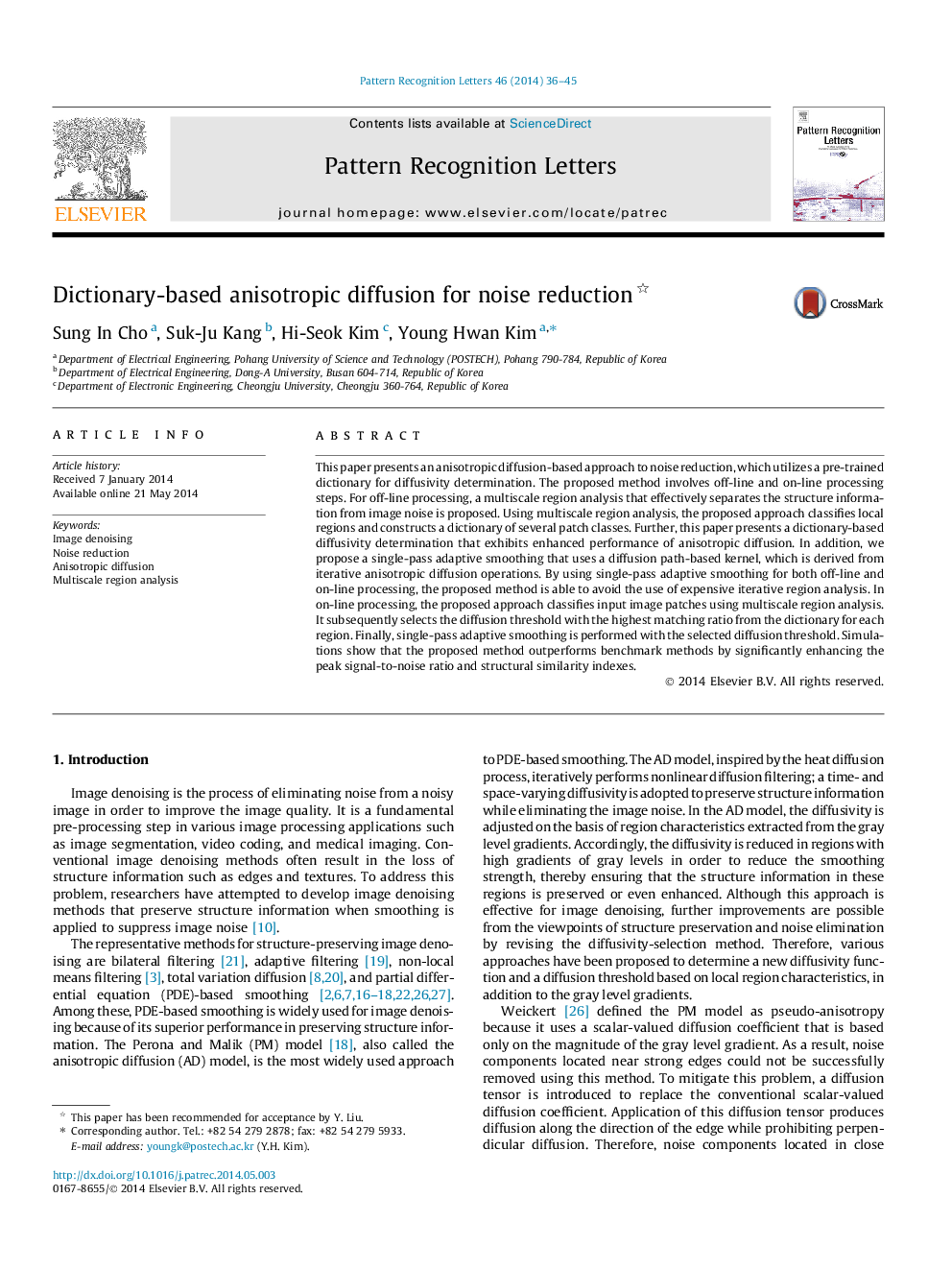| Article ID | Journal | Published Year | Pages | File Type |
|---|---|---|---|---|
| 534273 | Pattern Recognition Letters | 2014 | 10 Pages |
•Pre-trained dictionary-based anisotropic diffusion is proposed for noise reduction.•Multiscale region analysis is proposed for an efficient patch classification.•The anisotropic diffusion is transformed into a single-pass adaptive smoothing.•In the results, the proposed method showed an outstanding denoising performance.
This paper presents an anisotropic diffusion-based approach to noise reduction, which utilizes a pre-trained dictionary for diffusivity determination. The proposed method involves off-line and on-line processing steps. For off-line processing, a multiscale region analysis that effectively separates the structure information from image noise is proposed. Using multiscale region analysis, the proposed approach classifies local regions and constructs a dictionary of several patch classes. Further, this paper presents a dictionary-based diffusivity determination that exhibits enhanced performance of anisotropic diffusion. In addition, we propose a single-pass adaptive smoothing that uses a diffusion path-based kernel, which is derived from iterative anisotropic diffusion operations. By using single-pass adaptive smoothing for both off-line and on-line processing, the proposed method is able to avoid the use of expensive iterative region analysis. In on-line processing, the proposed approach classifies input image patches using multiscale region analysis. It subsequently selects the diffusion threshold with the highest matching ratio from the dictionary for each region. Finally, single-pass adaptive smoothing is performed with the selected diffusion threshold. Simulations show that the proposed method outperforms benchmark methods by significantly enhancing the peak signal-to-noise ratio and structural similarity indexes.
